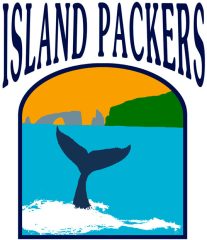Quick Details
Winter Whale Watching:
Available January - Mid April
Per Person
$ 34
Islands Wildlife Excursion:
Available Year-Round
Per Person
$ 34
Santa Barbara Channel & Channel Islands National Marine Sanctuary
1/2 Day Trips
This is a non island landing excursion that focuses on the natural history of this unique marine region, and the various types of wildlife that depend on a healthy ocean. Within the waters of the Channel Islands National Marine Sanctuary, over 35 species of marine mammals have been identified.
Throughout the year it is possible to see Common Dolphin, Risso’s Dolphin, Minke Whales, Bottlenose Dolphin, Pacific White Sided Dolphin, Dall’s Porpoise, Humpback Whales, and an occasional pod of Orca. Harbor Seals and California Sea Lions are also common around the harbor breakwaters and Anacapa Island. The islands and surrounding waters are also habitat for at least 60 species of seabirds. Some of the more common sightings of seabirds include Western Gulls, California Brown Pelicans, and several species of cormorants and shear-waters.
Winter Whale Migration
 Once on the brink of extinction, the Pacific Gray Whale has made a remarkable recovery and can be watched and admired while traveling along the coast during its annual migration from the feeding grounds of Alaska to their breeding grounds in the lagoons of Baja California. From January through March our main focus turns to these magnificent leviathans, while still leaving time for sightings of any other wildlife present.
Once on the brink of extinction, the Pacific Gray Whale has made a remarkable recovery and can be watched and admired while traveling along the coast during its annual migration from the feeding grounds of Alaska to their breeding grounds in the lagoons of Baja California. From January through March our main focus turns to these magnificent leviathans, while still leaving time for sightings of any other wildlife present.
What will my students experience?
 Students will have an opportunity to “get their sea legs” while learning various wildlife identification techniques, local oceanographic phenomenon, unique geographic features of the region, commercial resources present, the natural history of the islands, and about wildlife encountered and the diverse efforts being undertaken to protect and maintain this important region. All trips can be tailored to meet your curriculum goals and objectives.
Students will have an opportunity to “get their sea legs” while learning various wildlife identification techniques, local oceanographic phenomenon, unique geographic features of the region, commercial resources present, the natural history of the islands, and about wildlife encountered and the diverse efforts being undertaken to protect and maintain this important region. All trips can be tailored to meet your curriculum goals and objectives.
What is the physical exertion involved?
The cruises last from 3 – 3½ hours. Participants should be prepared for the temperature on the water to be 10 – 15 degrees cooler than the forecast for the coast. You should also be prepared for the motion of the boat, and consider seasickness precautions if necessary.
